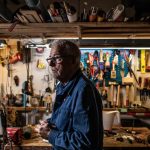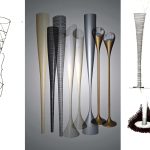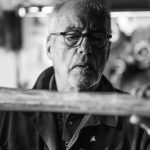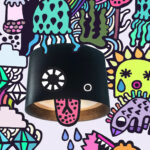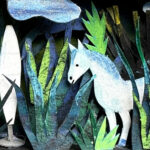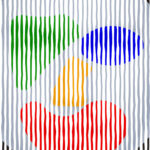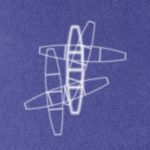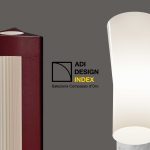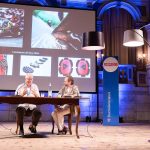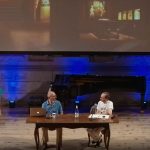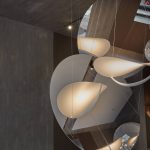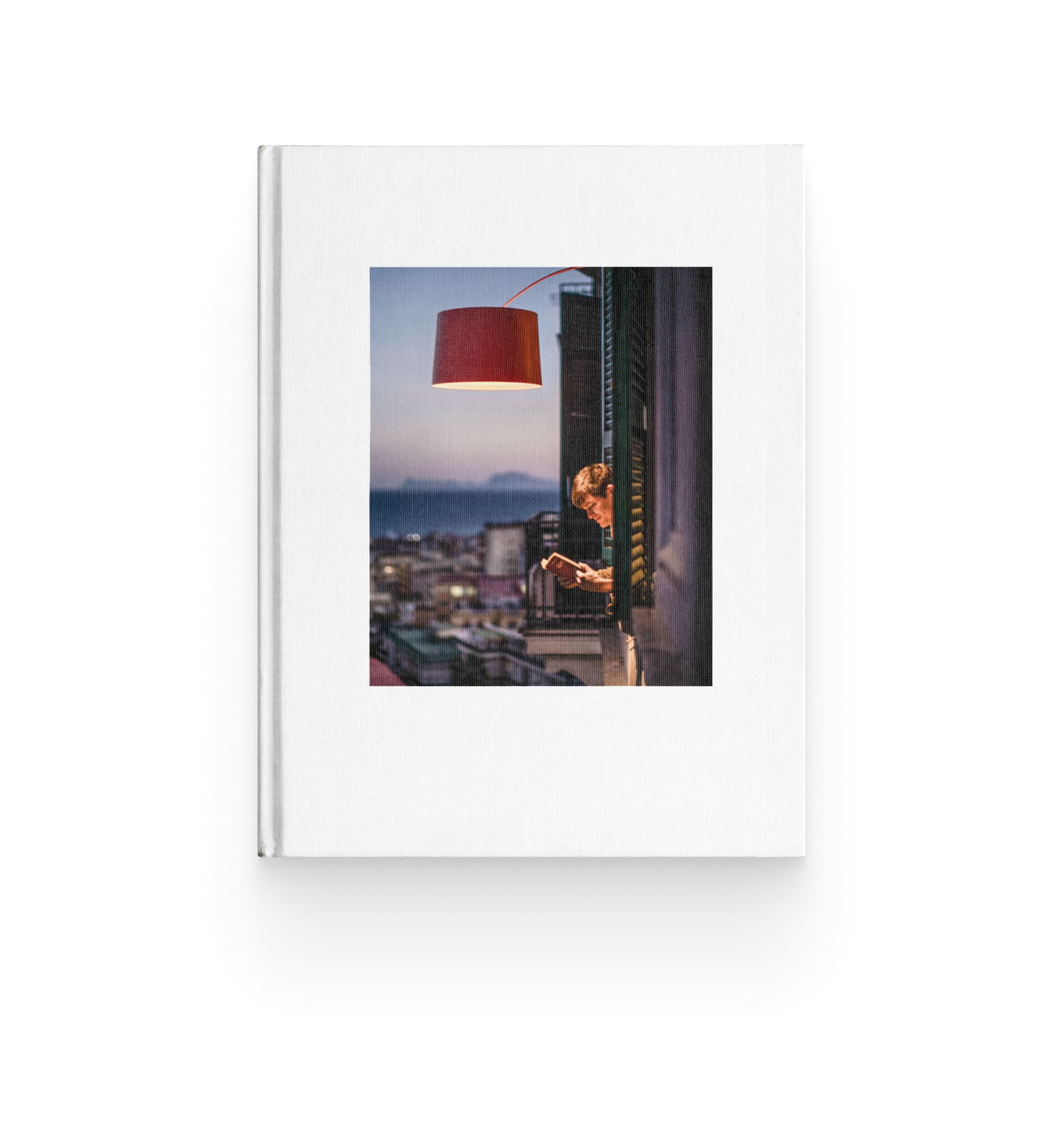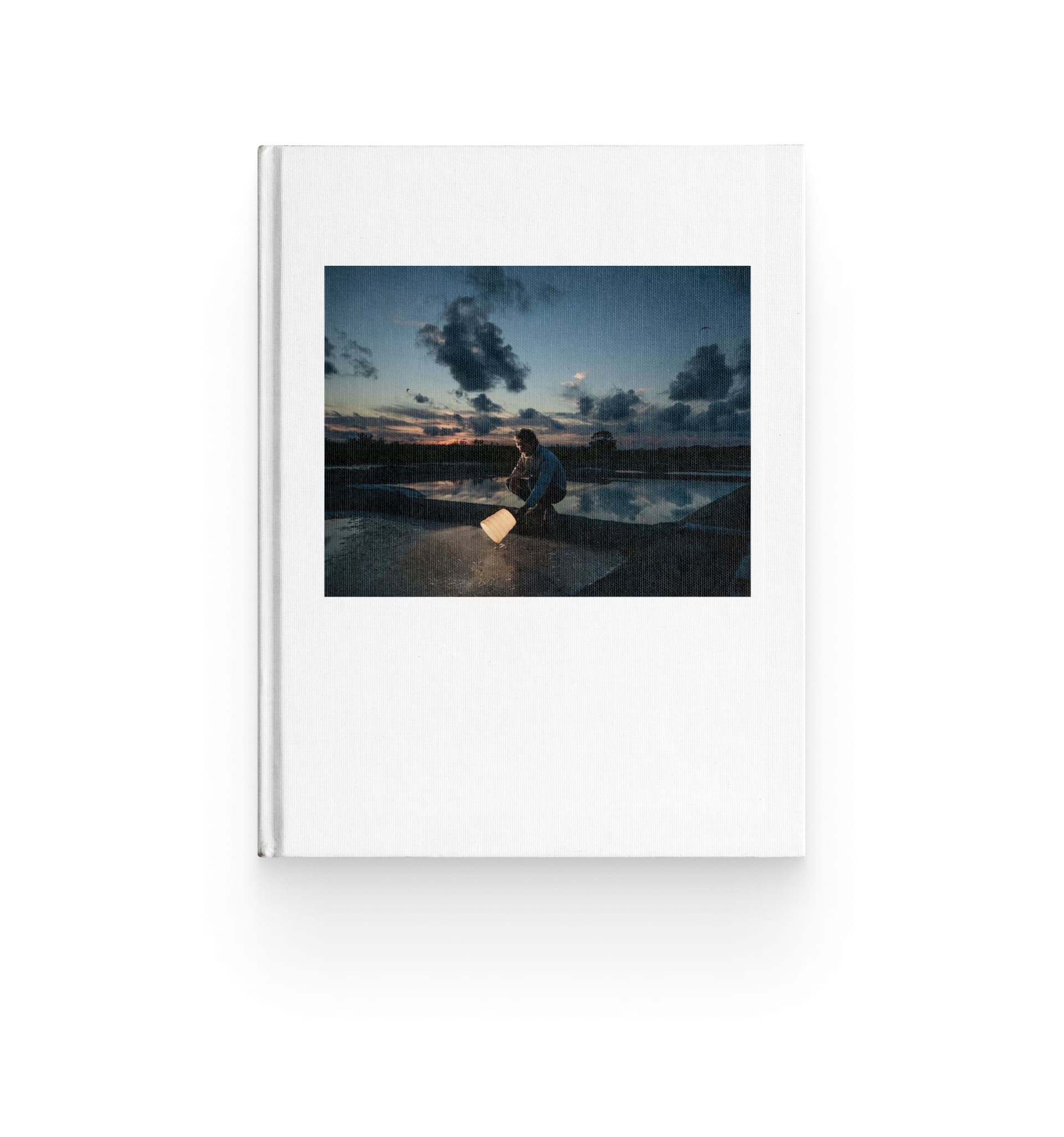Ten years after Compasso D’Oro: an interview with Marc Sadler
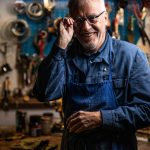
Mite is the lamp that marked the beginning of what has become a long-term collaboration between Foscarini and Marc Sadler: a project that disrupts the usual schemes, indulging in what the designer defines as “unreasonable urges”, an attitude that permits exploration of all the potentialities of a material and a technology.
In 2001 Mite won the Compasso d’Oro ADI – the most authoritative global design prize – together with the suspension version, Tite. Twenty years have passed since then, and we think this event, like the iconic and timeless character of Mite, deserves appropriate celebration. The result is Mite Anniversario, an evolution of the original Mite concept based on ulterior experimentation and variation. In this important occasion, we have interviewed Marc Sadler and had an interesting chat about Mite, Tite, and lighting design.
HOW DID THE COLLABORATION WITH FOSCARINI FOR THE MITE LAMP BEGIN?
MS — “I got to know Foscarini in a period when I was living in Venice, and Mite was the first project we developed together. For me, Foscarini was a small company that made glass, a focus that was quite different from what I was doing. One day I met one of the partners by chance, on a vaporetto. Conversing about our work, he told me about a theme that was on his mind at the time. He asked me to think about a project that would have the sense of uncertainty of glass – that handmade aspect that is impossible to control and grants every object its own personality – but could also be industrially produced, in a coordinated vision. We parted with a promise to think about the idea.”
WHAT WAS THE MAIN CONCEPT BEHIND THE PROJECT?
MS — “I was going to Taiwan for a project of tennis rackets and golf clubs, for a company that works with fibreglass and carbon fibre. That’s a world in which products are made in large numbers, not just a few specimens. When it is produced, when it comes out of the moulds, the racket is gorgeous; then the workers start to clean it, to finish it, to paint it, covering it with graphic elements, and it gradually loses part of the appeal of the production phase. In the end, you have an object covered with signs that conceal its true structure, and the final product – in my view – is always less interesting than it was in the initial phase. In my work as a designer, I prefer the product in its raw state, prior to the finishing, when it is still a “mythical”, beautiful thing, because the material vibrates. Looking at these pieces against the light, you can see the fibres, and I noticed the way the light passed through the material. I took some samples and brought them to Venice. As soon as I got back I called Foscarini, and told them I was thinking about a way to use this material. Although the fibreglass, made of patches of material, has limits in the uncertainties of its workmanship, I was thinking about an object for industrial production. Proposing it to them was rather risky, because large production quantities would be necessary to justify its use, and the material is not very versatile and adaptable. Nevertheless, if we were able to keep it in that fascinating material state, it would be a great opportunity for application to a lighting project.”
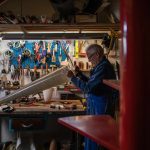
WHAT HAPPENED DURING THE RESEARCH AND DEVELOPMENT PHASE?
MS — “We rang a lot of doorbells of suppliers who used the same materials and techniques to produce wine vats or sporting goods, but unfortunately they were not willing to collaborate on this experimental research. But we were not discouraged, and we continued to search until we found an entrepreneur who also worked with this material for his own, personal pursuits (he had built a motorized hang-glider). He was enthusiastic about the project and immediately wanted to cooperate on it. He had a company that produces extraordinary, very special fishing rods, but he decided to take the leap with us into the world of lighting. He sent us trial samples, which he made on his own, asking our opinion on new resins and new threads. Design is made by people who act and interact, together. This is a totally Italian kind of magic. In the rest of the world, companies often wait for the designer to arrive, like a superhero, ready to deliver something that is already done, ready for implementation. But that is not how it works: to make truly innovative projects, there has to be on-going dialogue, a process where problems arise and are solved together. I prefer that way of working.”
DID YOU MAKE MODELS AND PROTOTYPES FOR STUDY?
MS — “The first model was made with a traditional closed mould, but then it occurred to us that we could try another technique – “rowing” – based on the wrapping of threads around a full volume. Observing the threads that could be used, I found some bundles that were considered defective, where the thread was not perfectly linear, but seemed a little vibrated. This type of thread became the resource for the final production. The fibres are not all uniform: we wanted to utilize this “defect” which makes each lamp have a unique quality. We wanted to get away from the technical aspect, to bring the value of craftsmanship and a warm sense of material back into play, which is something people know how to do in Italy.” In an initial prototype, I had cut off the top at a 45° angle, inserting a car headlight. If I look at that first prototype again today it bothers me a little, but that’s absolutely normal because it represents the beginning of a long search path. To reach a simple product, a lot of work is required. At first, my sign was too strong, almost violent. Foscarini was very good at mediating it, and that’s just right, that’s what design is all about. It means striking the right balance between the parties on the field to work together on a common endeavour. Only by working with Foscarini, who knows how to treat light, who knows how to add taste to transparencies and warmth to texture, were we successful in making sure the product achieved its proper proportion and authenticity. We managed to get a much cleaner, clear-cut object, so the important thing is the light it produces, the transparency of the body and the vibration that can be seen in its design. Not an object that screams out loud, but rather a gentle element that glides into homes.”
WHAT ARE THE SPECIFIC CHALLENGES IN A PROJECT INVOLVING LIGHT?
MS — “After this lamp and after this approach to composite materials, I got back to some extent to the label of the designer who makes lamps with novel materials. This doesn’t bother me, and in fact it is what we love doing, together with Foscarini. So today, if in my research I find something interesting, or something that has not yet been utilized in the world of lighting, Foscarini is the company with which I can have the best chance of developing something original and innovative.”
WHAT ARE THE MOST IMPORTANT ASPECTS OF THE LIGHTING TECHNOLOGY USED IN THIS PROJECT?
MS — “Over the last 20 years, lighting technology has evolved a great deal, and now we use LEDs. With respect to the technology of the past, it is a bit like the difference between electronic injection and a carburettor. You could achieve excellent results with a carburettor, but it took a genius who knew how to listen to motors, and how to tune them by hand. For Mite something similar happened. In the first version we inserted a rather long light bulb, positioned at a certain height. To close the trunk, we shaped a circular chrome-finished metal plate, experimenting with ifferent angles, to reflect the direct light upward but also to make the light go down in the body of the lamp, letting it run over the material, with a back-lighting effect. Obviously that technology created limits of freedom of action, while today with LEDs we can take the luminous effect wherever we want it.”
HOW HAS THE WORK OF DESIGNERS CHANGED DURING THESE FIRST TWO DECADES OF THE NEW MILLENNIUM?
MS — “I am happy with my work today because its seems like a return to the 1970s, when the entrepreneur had an important role and expressed clear intentions made of objectives, a schedule, the right budget, and knowing that he had worked well up to that point, wanted to go further, somewhere he had never gone before. Perhaps it is this very arduous moment of the pandemic, perhaps it is because I am starting to get tired of working with large multinational and oriental corporations, but I think the time has come to get back to direct, personal work with entrepreneurs.”
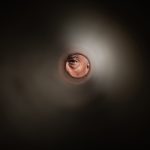
HOW IMPORTANT IS “TECHNOLOGY TRANSFER” IN DESIGN RESEARCH?
MS — “It’s fundamental. My work could be seen in terms of the principle of communicating vessels. I take something from one place, and I ‘pull’ it into another place, to see what happens. I have always done this, for my whole life. In my studio we have a workshop where with my hands I can build or repair anything, and this helps me a lot. It is not the concept of the ‘sky’s the limit’, but I think a lot before saying no to something, because often there are already solutions that exist elsewhere, so it is enough to know how to transfer them.”
THIS LAMP IS MADE OF A SELF-SUPPORTING (TECHNOLOGICAL) “WEAVE”: WHAT IDEA IS SHARED BY TEXTILES WITH THE DESIGN OF LIGHTING?
MS — “In Mite the importance of the fabric comes from the advantage of being able to have a weave that vibrates the light when it passes through the body of the lamp, so it was no simple task to find the right fabric. But with the fabric, in its infinite variables, you can always do marvellous things with light, and in fact with Foscarini we are continuing to experiment and to develop new projects.”
WHAT DOES THE NAME MITE MEAN, AND ITS SUSPENSION VARIANT, TITE?
MS — “The name comes from a word game in French, which my mother taught me when I was a boy, to help me remember the differencebetween mineral formations in caves, divided into those that grow from the bottom up, the stalagmites, and those that descend from above, the stalactites. Hence the idea for the name. While initially I was thinking about the logic of a form that tapers as it gets further away from the floor or ceiling – so the names of the two lamps had to be reversed – this logic works well for its typological affinities too: the (stalag)MITE rests on thefloor, and the (stalac)TITE hangs from the ceiling.”

